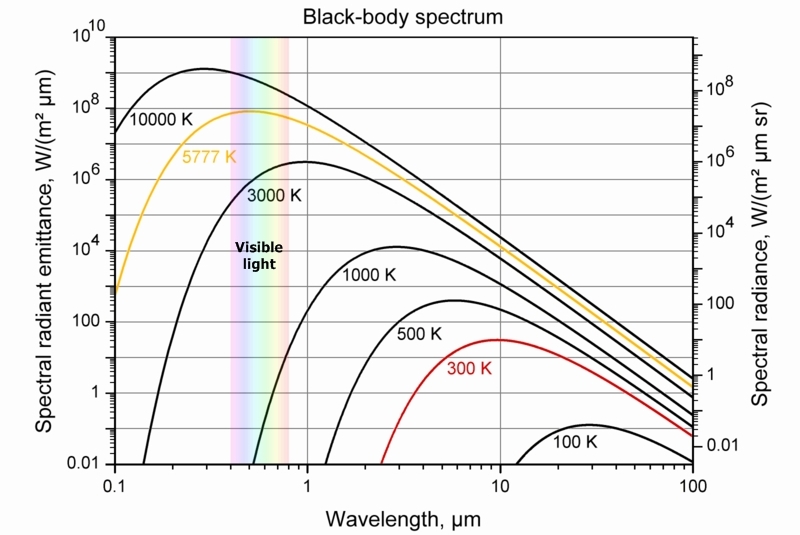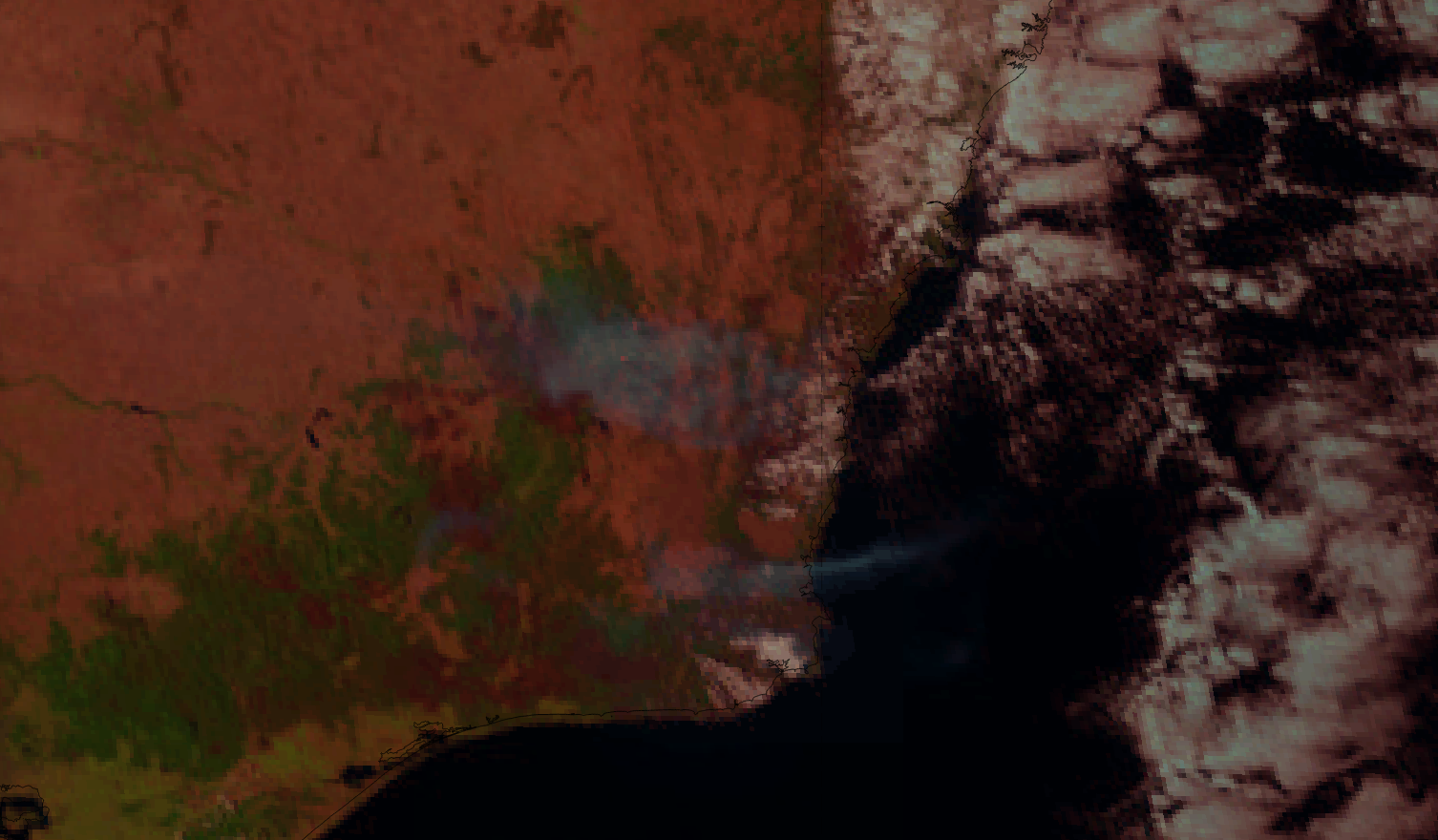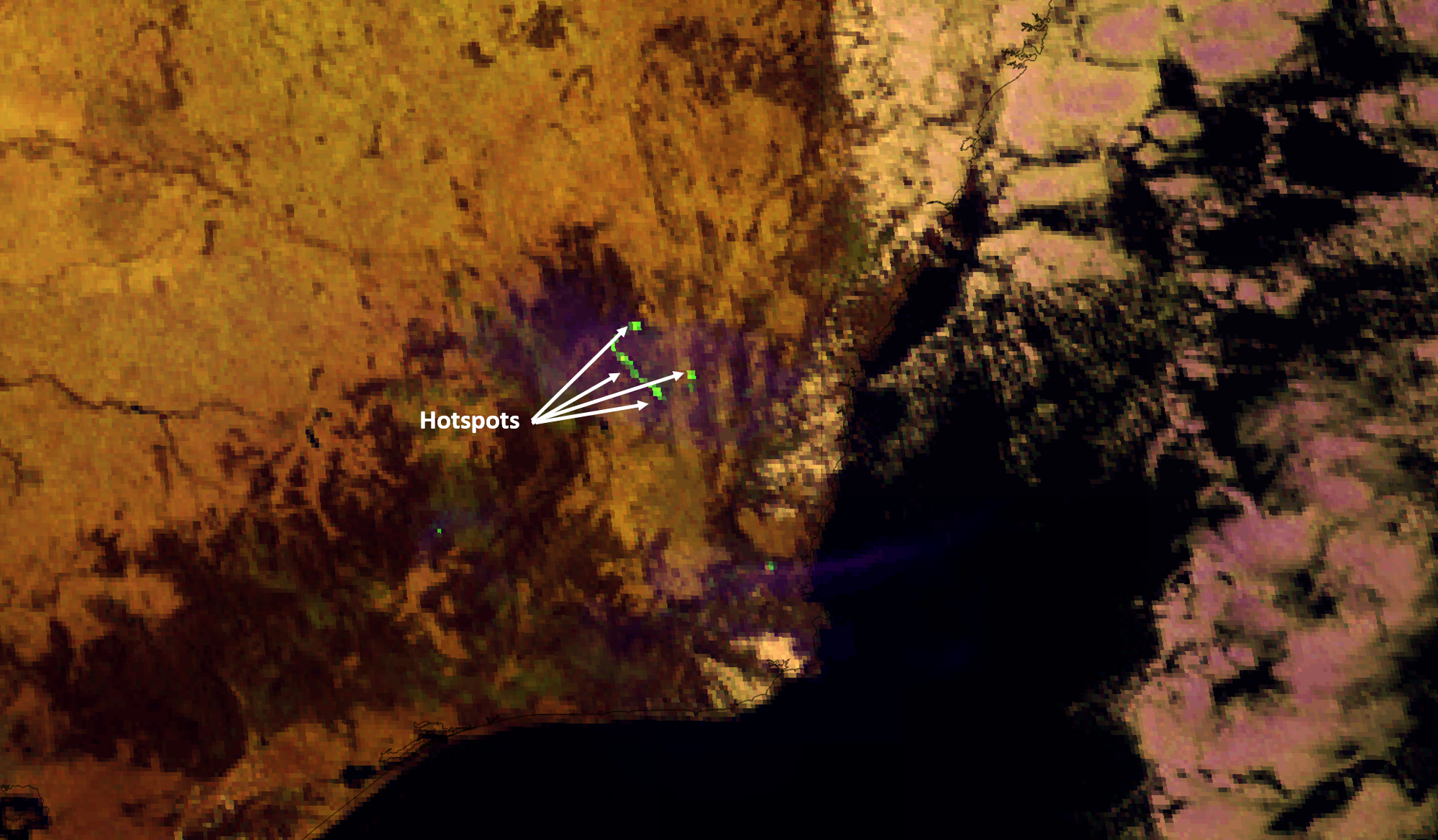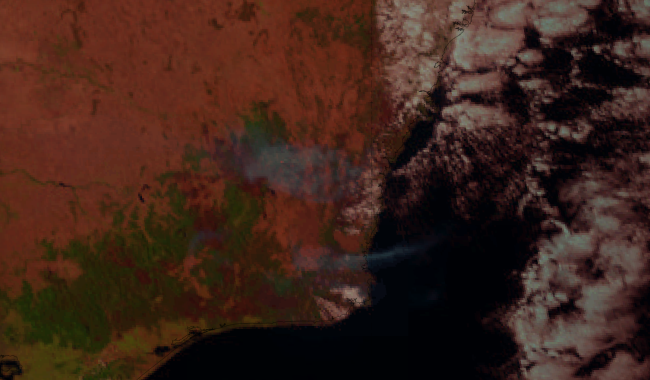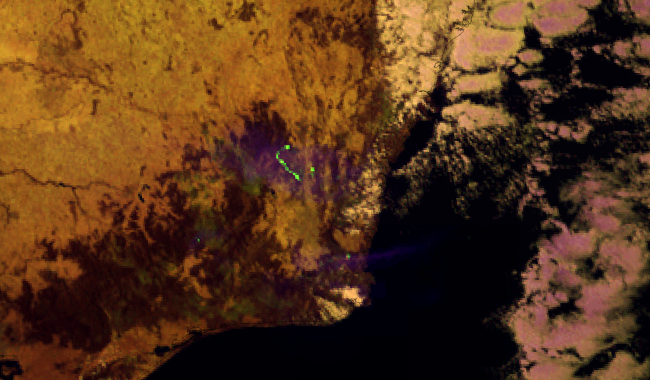Fire detection using Cloud Phase RGB, 4 February 2020
On 4 February 2020 the wildfire season was still ongoing in Australia. The Japanese Himawari satellites detected the fires using several of their available channels. In this short case we will talk about 2 of the 3 channels that are useful for fire detection, the 1.6 μm channel and the 2.25 μm channel.
The standard Natural Colour RGB contains only one channel sensitive to fires or heat, the NIR 1.6 μm, which can detect very hot fires (Wien's law, 1.6 μm -> 1810 K).
Figure 1: Black body radiation at different temperatures - the peaks of the curves are connected by Wien's law; source: Wikipedia
When the channel receives the signal from a fire, the pixel in which this fire is located becomes reddish, which is intuitive. However, those kinds of fires are rare and because of that it would be useful to have a channel that detects less hot fires and that's where the NIR 2.25 μm channel steps in.
Figure 1: Natural Colour RGB, 4 February 2020 at 06 UTC - one can clearly see the smoke and the burned brownish area produced by the fires, although the fire pixels themselves are not so visible, because the fires are not that hot
The 2.25 μm band of the EM spectrum has its peak black body emission at around 1290 K, which is slightly more than 500 K cooler than the peak of the 1.6 channel and that makes the 2.25 μm channel an excellent candidate for detecting moderately hot fires.
Combining the two mentioned channels and the 0.67 μm channel we get the Cloud Phase RGB (1.6, 2.25, 0.67), an RGB which primarily serves as a cloud phase detection product, as the name says, but is also very useful for analyzing fires.
As the red beam shows the most intense fires and the green beam shows moderate fires, most of the events a user can see will be greenish. However, in the very hot parts of fires the color will change to yellow, because the red beam will become activated.
Figure 2: Cloud Phase RGB on 4 February 2020 at 06 UTC - fires are nicely seen as greenish to yellowish stripes, while the smoke is seen as purplish haze over the land and the sea
|
|
Figure 3: A slider comparing the Natural Colours RGB and the Cloud Phase RGB; notice the difference in smoke and fires/hotspots between the two RGBs
Question:
Why is smoke better visible in the Natural Colour RGB than in the Cloud Phase RGB?
The correct answer is: b) => NC (1.6 μm, 0.8 μm, 0.6 μm), CP (1.6 μm, 2.25 μm, 0.6 μm)
